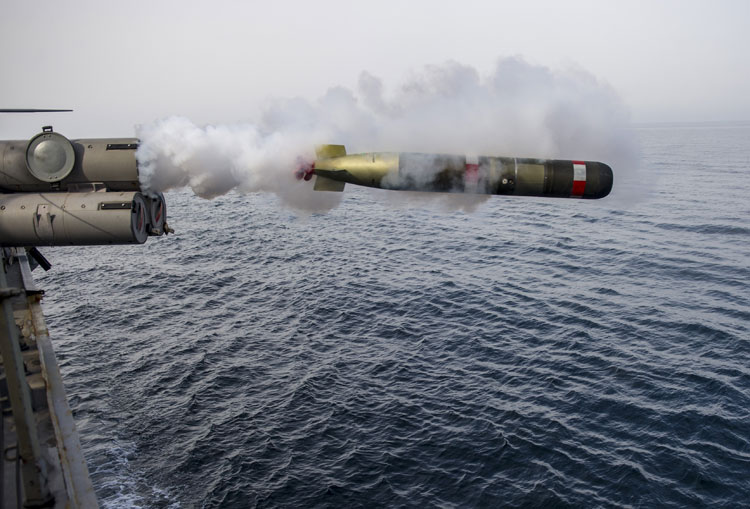INDIAN ARMED FORCES CHIEFS ON OUR RELENTLESS AND FOCUSED PUBLISHING EFFORTS

The insightful articles, inspiring narrations and analytical perspectives presented by the Editorial Team, establish an alluring connect with the reader. My compliments and best wishes to SP Guide Publications.

"Over the past 60 years, the growth of SP Guide Publications has mirrored the rising stature of Indian Navy. Its well-researched and informative magazines on Defence and Aerospace sector have served to shape an educated opinion of our military personnel, policy makers and the public alike. I wish SP's Publication team continued success, fair winds and following seas in all future endeavour!"

Since, its inception in 1964, SP Guide Publications has consistently demonstrated commitment to high-quality journalism in the aerospace and defence sectors, earning a well-deserved reputation as Asia's largest media house in this domain. I wish SP Guide Publications continued success in its pursuit of excellence.
- Operation Sindoor: Resolute yet Restrained
- India’s Operation Sindoor Sends a Clear Message to Terror and the World – ‘ZERO TOLERANCE’
- Japan and India set forth a defence cooperation consultancy framework, talks on tank and jet engines
- Terrorist Attack in Pahalgam in Kashmir: Unfolding a long surgical war against PAK
- Lt General Pratik Sharma takes over Command of Indian Army's Northern Command
Torpedoes for Indian Navy
 |
The Author is Former Director General of Information Systems and A Special Forces Veteran, Indian Army |

On April 13, the Trump Administration notified the Congress of its determination to sell Harpoon Block II air launched missiles and lightweight torpedoes worth $155 million to India. The 10 AGM-84L Harpoon Block II air launched missiles is estimated to cost $92 million, while 16 MK 54 All Up Round Lightweight Torpedoes and three MK 54 Exercise Torpedoes are estimated to cost $63 million. According to the Pentagon, the Harpoon missile system will be integrated into the P-8I aircraft to conduct anti-surface warfare missions whilethe MK 54 Lightweight Torpedoes will provide the capability to conduct anti-submarine warfare missions. PTI has quoted Pentagon in saying that India will have no difficulty in absorbing this equipment and this proposed sale will support the foreign policy and national security of the United States by helping to strengthen the US-Indian strategic relationship and to improve the security of a major defensive partner, which continues to be an important force for political stability, peace, and economic progress in the Indo-Pacific and South Asia region.
The Harpoon missiles will be manufactured by Boeing while the MK 54 Lightweight Torpedoes will be supplied by Raytheon. The Harpoon is an all-weather, over-the-horizon, anti-ship missile. It uses active radar homing and flies just above the water to evade enemy defences, the guidance system constituting sea-skimming cruise monitored by radar altimeter / active radar terminal homing. With a warhead weighing 221 kg and speed of 864 kmph (Mach 0.71), its operational range is in excess of 280 km depending on the launch platform. The MK 54 Lightweight Torpedo is a standard 12.75 inch anti-submarine torpedo with the warhead (PBXN-103) weighing 43.9 kg. The guidance is active or passive / acoustic homing. It has a speed of 74.1 kmph and the propellant used is Otto II (liquid). The MK 54 can be deployed from a surface ship, helicopter or fixed wing aircraft to track, classify and attack underwater targets. It uses sophisticated processing algorithms to analyse the information, edit out false targets or countermeasures, and then pursue identified threats. According to Raytheon, The MK 54 programme leverages the most modern torpedo technologies from the MK 50 and MK 48 ADCAP (advanced capability) programmes. It also utilises the proven MK 46 warhead and propulsion subsystems. The result is a low-cost weapon that meets all performance requirements for littoral warfare.
Significantly, India’s indigenous Advanced Lightweight Torpedo (TAL) named ‘Shyena’ was handed over to the Navy in a ceremony by the then Defence Minsiter on March 3, 2012, along with the Akash Missile to the IAF. Bharat Dynamics Limited (BDL), Hyderabad was the production agency for both but the design and development of Shyena was done by the Naval Science and Technology Laboratory (NSTL), Vizag which is under the DRDO. The development period of Shyena was quite long, starting in the 1990s, it was ready for trials only by 1998. Thereafter, it was tested 24 times by NSTL from 1998 to 2000. User evaluation tests with designed and engineered models of the Shyena took place between 2003 and 2005. 95 per cent components of Shyena are reportedly indigenous, balance being few integrated circuits and sensors. Weighing 220kg, with a length of 2.75m and a high explosive warhead weighing 50 kg, Shyena has an operational range of 19 km. With a maximum speed of 61.1 kmph, it can operate to the depth of 540m. Shyena can be launched from ships, helicopters and submarines. Shyena is a processor based torpedo which incorporates solid-state electronics, digital technology and has been equipped with an integrated Active/Passive sensor package for homing. Its key design feature is maneuverability and ability to transition from warm to cold medium to ensure a hunt and kill.
The Navy reportedly ordered 25 units of Shyena and is likely to order more. In March 2017, India signed $37.9 million deal to supply an unspecified number of Shyena torpedoes for the Myanmar Navy. First batch of these torpedoes were delivered to Myanmar in July 2019. In December 2019, India handed over the Russian refitted Kilo-class INS ‘Sindhuvir’ to the Myanmar Navy primarily for training submariners. Fitted with a diesel-electric engine, the submarine has noiseless operational capability and can stay underwater for about 45 days. It has a displacement of 3,000 tonnes and can be equipped with various types of weapons. It can carry 52 personnel and can go to a depth of 300 meters. Getting back to imports from the US and purchase of AGM-84L Harpoon Block II missiles and MK 54 All-Up-Round Lightweight torpedoes for the P-8I. In July 2012, Boeing began flight testing of the P-8I. On 19 December 2012, the first P-8I was handed over at Boeing's facility in Seattle; it was inducted into the Indian Navy on 15 May 2013 – seven years back. A question we need to ask ourselves is how long will India keep depending on imports. When would we be in a position to produce an indigenous equivalent of the Harpoon missile? Moreover, if Raytheon could create the MK 54 torpedo by combining homing portion of the MK 50 and warhead and propulsion sections of the MK 46, have we ever thought of upgrading the Shyena and if not, why not?





